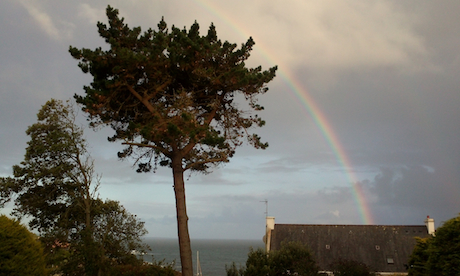
What in the World Is a Higgs Boson?
Peter Higgs, an Edinburgh University professor, discussed the particle that bears his name in an interview with PBS in 2011.
High-energy particle physics is not something usually associated with pop culture, but CERN’s Large Hadron Collider, where physicists recently found what might be the long-sought Higgs boson, has had a long run in the cultural limelight.
First, it was the source of the antimatter that was going to blow up the Vatican in the movie and the book “Angels and Demons.”
Then it was going to destroy the world, as critics alleged in an infamous lawsuit that was eventually thrown out, by producing a black hole that would swallow the earth. Artists, particularly photographers, have found beauty in the gargantuan scale of the collider, 17 miles around.
In my own all-time favorite example of “outreach,” science writers rapped and danced about it in the “Large Hadron Rap.”
A small industry has developed around explaining the collider’s quest to discover a particle with the folksy name of the Higgs boson, which could explain why things in the universe have mass. Last winter Lisa Randall, a prominent Harvard theorist, sat down with me in a sort of virtual sense to talk about this quest. Everything she said is still true.
Q.In 1993, the United States Congress canceled a larger American collider, the superconducting super collider, which would have been bigger than the CERN machine. Would it have found the Higgs particle years ago?
A.Yes, if it had gone according to schedule. And it would have been able to find things that weren’t a simple Higgs boson, too. The Large Hadron Collider can do such searches as well, but with its lower energy the work is more challenging and will require more time.
Kathryn Grim took a light approach in “Ten Things You May Not Know About the Higgs Boson,” originally published in Symmetry, a magazine for physicists. And the BBC published a Q. and A. answering basic questions about the Higgs particle.
Peter Higgs, the Edinburgh University professor for whom the particle is named, appeared in Brian Greene’s 2011 “Nova” special describing some of the agony of the particle’s birth.

And Jorge Cham of PhD Comics turned an explanation by the physicist Daniel Whiteson into an animated feature (the cartoon starts 37 seconds in):
Discovery of the particle would disprove one of the loopier theories that was put forward, by a pair of renowned theorists a few years ago, to the effect that the boson didn’t want to be found and could reach back into the past in a sort of kill-your-grandfather way to prevent itself from being discovered.
If all else fails, you can play the Agent Higgs game.
Or follow the Higgs rumor mill on Twitter.













